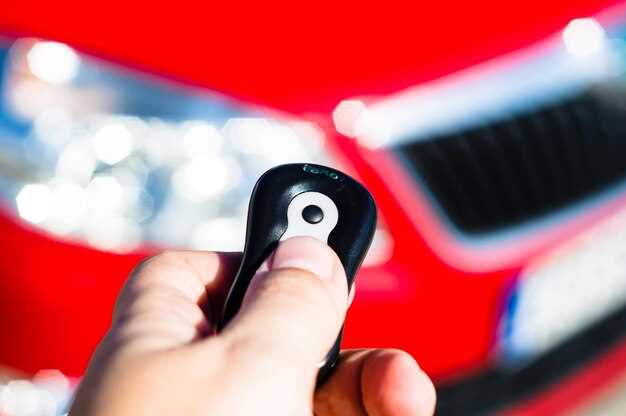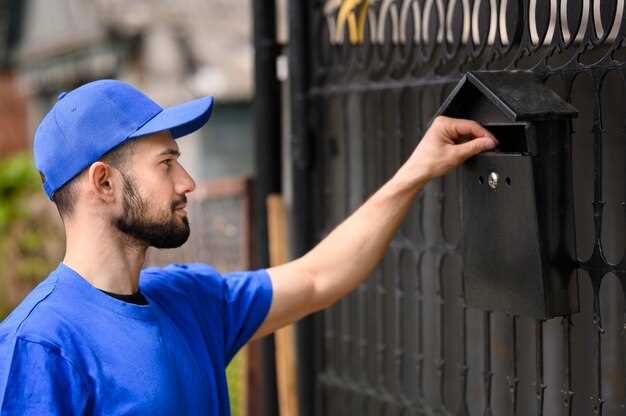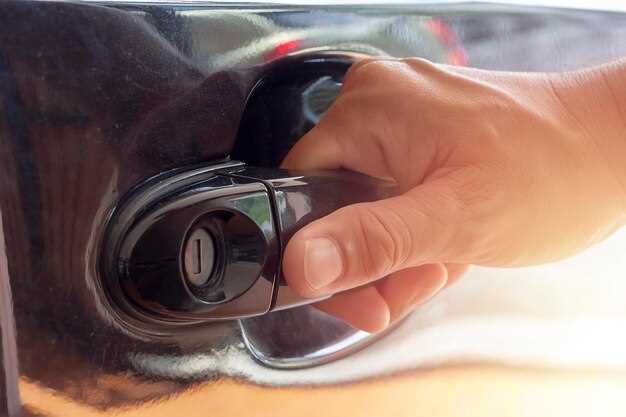
The central locking system is an essential feature in the VW Corrado, providing convenience and security for vehicle owners. However, like any mechanical system, it may occasionally encounter issues that require repair. A malfunctioning actuator can lead to problems such as doors not locking or unlocking properly, which can be both frustrating and unsafe.
When it comes to repairing the central locking system, understanding how the actuator functions is crucial. The actuator is responsible for translating the driver’s input into physical movement, allowing the locks to engage or disengage. Identifying the symptoms of a faulty actuator can help you determine whether a simple adjustment will suffice or if a complete replacement is necessary.
This article will guide you through the process of diagnosing and repairing the central locking system in your VW Corrado. We will cover common issues, provide step-by-step instructions for replacing the actuator, and offer tips for ensuring long-lasting functionality. Whether you’re a seasoned mechanic or a DIY enthusiast, this comprehensive approach will equip you with the knowledge needed for effective repair.
Identifying Common Issues with Central Locking in VW Corrado
When troubleshooting the central locking system in a VW Corrado, it’s essential to recognize common issues that may arise. The central locking system relies heavily on actuators and electrical components, which can often malfunction over time.
- Faulty Actuators: One of the most prevalent issues is a malfunctioning actuator. If a door fails to lock or unlock, the actuator might be damaged or stuck. Listen for unusual sounds when engaging the locks; this can indicate actuator problems.
- Energization Issues: A lack of power to the central locking system can prevent it from functioning. Check the fuses and wiring to ensure power is reaching the actuators. A blown fuse can lead to complete inoperability.
- Remote Key Fob Malfunctions: Sometimes, the issue isn’t within the car but with the remote. Replace the battery in the key fob and test its functions. If the fob still doesn’t work, it may need to be reprogrammed or replaced.
- Central Locking Module Failures: The central locking module controls the locking functions of all doors. If this module fails, it can lead to intermittent or complete locking issues. Diagnosing this often requires specialized tools.
- Worn Wiring and Connectors: Over time, wiring can wear down or corrode, leading to poor connections. Inspect wiring and connectors associated with the locking system for damage or wear and repair as needed.
By identifying these common issues, you can efficiently diagnose problems within the central locking system of your VW Corrado. Repairing faulty components or restoring connections will often solve the locking issues, ensuring your vehicle remains secure and functional.
Tools Required for Central Lock Actuator Repair
To successfully repair the central lock actuator in a VW Corrado, you will need a specific set of tools to ensure the process is efficient and effective. Having the right equipment can make the repair smoother and minimize the risk of damaging components.
First, a set of basic hand tools is essential. This includes flathead and Phillips screwdrivers, which are necessary for removing screws that secure the door panel and the actuator itself. A socket set will also be required, particularly metric sizes, to loosen and tighten bolts effectively.
A pair of pliers and wire cutters will be helpful for manipulating wiring and handling connectors. These tools allow you to safely cut or bend wires without causing further damage to the locking system. Additionally, a multimeter can be crucial for diagnosing electrical issues within the locking mechanism. It helps in checking voltage and continuity, ensuring that the actuator and wiring are functioning correctly.
It is advisable to use a trim removal tool to prevent damage to the interior panels when accessing the actuator. This tool helps in popping off clips without marring the surfaces. Lastly, a flashlight or work light will provide adequate illumination, allowing you to see into tight spaces while working on the actuator.
By gathering these tools before starting the repair, you can efficiently address any issues related to the central locking system in your VW Corrado, ensuring a successful and thorough repair process.
Step-by-Step Guide to Accessing the Central Lock Actuator
Accessing the central lock actuator in your VW Corrado is a crucial step for performing a repair or troubleshooting any issues with the locking system. Follow these detailed steps to ensure a safe and effective process.
-
Gather Necessary Tools:
- Screwdrivers (Phillips and flathead)
- Torx bits
- Socket wrench set
- Flashlight (for visibility)
- Safety gloves
-
Disconnect the Battery:
Before starting any repair work, disconnect the negative terminal of the battery to prevent accidental electrical shorts.
-
Remove Door Panel:
To access the central lock actuator, you need to remove the door panel:
- Locate and remove any visible screws on the door panel.
- Carefully pry off any clips using a flathead screwdriver.
- Gently pull the door panel away from the door frame, being cautious of wiring connections.
-
Locate the Central Lock Actuator:
Once the door panel is removed, find the central lock actuator, usually positioned near the door lock mechanism.
-
Disconnect the Actuator:
To access the actuator, carefully disconnect its electrical connector:
- Press on the connector tab and gently pull it away.
- Be careful not to damage any surrounding wires.
-
Remove the Actuator:
Next, unscrew or unclip the actuator from its mounting position:
- Use the appropriate tools to remove screws or bolts holding the actuator in place.
- Keep track of all fasteners for reinstallation.
-
Inspect the Actuator:
With the actuator removed, inspect it for signs of wear, damage, or malfunction. Look for any broken parts or disconnections that may need repair.
-
Reassembly:
To finish, reverse the steps taken to disassemble the components:
- Secure the new or repaired actuator back into place.
- Reconnect the electrical connector.
- Reattach the door panel, ensuring all clips and screws are secured.
-
Reconnect the Battery:
Finally, reconnect the negative battery terminal and test the central locking system to ensure everything is functioning correctly.
By following this step-by-step guide, you can successfully access and repair the central lock actuator in your VW Corrado, ensuring your locking system works efficiently.
How to Test the Actuator for Proper Functionality

Testing the actuator of your VW Corrado’s central locking system is crucial for effective repair. The actuator is responsible for locking and unlocking doors, and any malfunction can hinder its performance. Follow the steps below to ensure your actuator functions properly.
Before starting, ensure you have the necessary tools: a multimeter, a screwdriver, and wire connectors. Make sure to disconnect the vehicle’s battery to avoid any electrical hazards.
Begin by removing the door panel to access the actuator. Carefully detach any clips or screws holding the panel in place. Once the panel is off, locate the actuator, which is typically situated near the lock mechanism.
Now, proceed to test the actuator’s functionality:
| Step | Description |
|---|---|
| 1 | Connect the multimeter to the actuator’s terminals. Ensure the reading is set to measure voltage. |
| 2 | Reconnect the vehicle’s battery and activate the central locking system (either via the remote or the vehicle’s lock switch). |
| 3 | Observe the multimeter; a reading of around 12 volts indicates the actuator is receiving power. |
| 4 | If no voltage is detected, check for blown fuses or wiring issues leading to the actuator. |
| 5 | If voltage is present, manually trigger the actuator by applying a direct power source to the actuator terminals. Watch for movement; it should lock or unlock as intended. |
| 6 | If the actuator does not respond to direct power, it may need replacement. |
After testing, if the actuator is functioning correctly, reassemble the door panel and reconnect the battery. If repairs are needed, source a compatible actuator, and replace it following the removal steps in reverse.
Testing the actuator regularly can help maintain the integrity of the central locking system in your VW Corrado, ensuring reliable performance and enhancing security.
Reassembling the Central Locking System after Repairs
After completing repairs on the central locking system of your VW Corrado, it is essential to reassemble the components correctly to ensure optimal functionality. Start by gathering all the parts, including the actuator, wiring harness, and locking mechanisms.
Begin with the installation of the central lock actuator. Position the actuator in its designated housing, ensuring that it aligns properly with the locking mechanism. Connector clips should be attached securely to prevent any disconnection during operation.
Next, connect the wiring harness to the actuator, taking care to observe the correct orientation and polarity. This step is crucial, as improper connections can lead to malfunctioning components or even damage to the system.
Once the actuator is connected, engage the locking mechanisms manually to verify their operation. Ensure that all moving parts are free from obstructions and that they operate smoothly when actuated.
Finally, carefully reassemble any panels or coverings that were removed during repairs. Make sure that they fit snugly without interfering with the newly installed components. After the reassembly is complete, perform a final test of the central locking system to confirm that it is functioning as intended.
Troubleshooting Persistent Central Locking Problems

If you’re experiencing consistent issues with the central locking system in your VW Corrado, it can be frustrating. The first step in troubleshooting is to check the actuator. This device is responsible for locking and unlocking the doors. If it is malfunctioning, it may not send the correct signals to the locking mechanism.
Begin by testing the actuator. You can do this by applying direct power to it. If the actuator does not respond, it may need replacement. However, if it works when directly powered, the issue may lie elsewhere, such as in the wiring or control module.
Next, inspect the wiring connecting the actuator to the central locking system. Look for any signs of wear, corrosion, or breaks. Damaged wires can prevent the actuator from receiving the necessary signals, leading to persistent locking issues. Repairing or replacing any damaged wiring can often resolve the problem.
Additionally, examine the lock mechanism itself. Sometimes, dirt or rust can cause the lock to stick or become unresponsive. Cleaning and lubricating the locking mechanism can improve its performance. Ensure that all components are moving freely and that there are no obstructions.
If problems persist after checking the actuator, wiring, and locking mechanism, it may be necessary to assess the central locking control unit. A faulty control unit can send incorrect commands to the actuators, resulting in erratic behavior. In some cases, a reprogramming of the unit or a complete replacement might be required.
Troubleshooting central locking problems can be a process of elimination. By systematically checking each component related to the locking system, you can identify the source of the issue and implement the necessary repairs to restore functionality.












